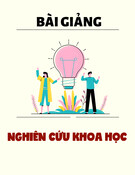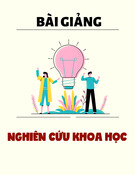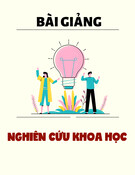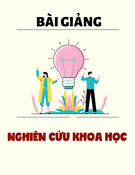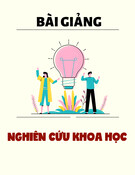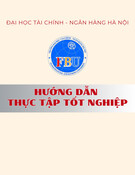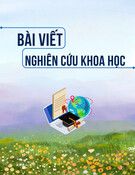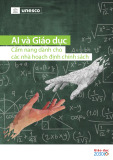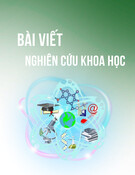
104
Pedagogika / 2024, t. 155, Nr. 3
Exploration of the Experience of Hands-On
Learning and Its Impacts on STEM Learning
Suganty Kanapathy1, Azrina Md Azhari2
1 National University of Malaysia, PERMATA@Pintar National Gifted Centre, ID-43600 Bangi, Selangor,
Malaysia, sugantyk@ukm.edu.my
2 National University of Malaysia, PERMATA@Pintar National Gifted Centre, ID-43600 Bangi, Selangor,
Malaysia, azrina.azhari@ukm.edu.my
Annotation. The article aimed to assess the effects of hands-on learning on communica-
ting STEM concepts. A survey was carried out involving 47 students at a gifted and talented
center in Selangor, Malaysia. It was observed that after engaging in hands-on learning, there
was a significant difference in the performance of the students, based on an evaluation of the
pre- and post-test scores. The survey analysis shows the variables tested have positively influ-
enced student learning. This paper is instrumental in assuring educators of the effectiveness
of hands-on activities during STEM lessons.
Keywords: hands-on learning, perceived learning, engagement, interaction, satisfaction.
Introduction
Nowadays, promoting student interest in STEM, and particularly in science, has
become a crucial educational goal among researchers due to a declining interest in
STEM in secondary schools (Steidtmann et al., 2022). Malaysia greatly idealizes STEM
education since it contributes to the nation’s growth, produces the necessary number of
STEM workers, and will eventually meet the demands and overcome all the hurdles of a
STEM-driven economy (Aspin et al., 2022). According to Meng et al. (2014), the enroll-
ment of science students at the Malaysian secondary school level has shown a decline,
causing serious concern about how to create student interest in STEM. The perception
that STEM fields are very difficult causes interest in these fields to decline. Teachers
play a vital role in revitalizing interest in these subjects by presenting innovative and
ISSN 1392-0340 (Print)
ISSN 2029-0551 (Online)
https://doi.org/10.15823/p.2024.
155
.6
Pedagogika / Pedagogy
2024, t. 155, Nr. 3, p. 1
04
–125 / Vol. 155, No. 3, pp. 1
04
–125, 2024

105
Pedagogika / 2024, t. 155, Nr. 3
creative ways of teaching. Learning theories frequently cause students to get bored
(Shasitiran, 2023).
Engaging students in STEM-based activities permits students’ ideas and under-
standing to be tested, compared to the traditional way of hearing and reading about
a topic (Ewers, 2001). STEM programs that exclude science experiences are hard to
conceptualize (Ates & Eryilmaz, 2011). In Malaysia, as part of various STEM initia-
tives, the Malaysian Education Blueprint intends to raise student interest through new
learning approaches, thus enhancing the curriculum and sharpening the skills and
abilities of educators by considering how students can succeed in the 21st century and
beyond (Ministry of Education, 2013).
In order to create individuals who can utilize and manage science and technology
resources, it is crucial to foster interest in STEM (Vennix et al., 2018). One situational
aspect that is frequently believed to spark students’ interest and inspire them to learn
science is practical work, also known as hands-on experience (Bergin, 1999). Educa-
tional authorities strongly advocate the use of hands-on activities in STEM classes
(Shahali et al., 2017). Therefore, teachers play a crucial role in developing strategies
for enhancing student engagement and curiosity in STEM subjects (Shasitiran, 2023).
Given the increasing demand for education reform in STEM, the intention of this
research was to explore the effects of hands-on learning instruction techniques on
communicating STEM concepts during classes.
Literature Review
Hands-on Learning
Hands-on learning approaches have been promoted by researchers around the
world in recent years. Various interpretations have also been proposed for hands-on
learning. One of the most widely known and accepted definitions of hands-on learning
is “learning by doing” (Sadi & Cakiroglu, 2011). According to some experts, hands-
on learning improves a student’s ability to think critically as part of a comprehensive
learning experience (Haury & Rillero, 1994). Thus, hands-on activities imply expe-
riential learning (Holstermann et al., 2010).
In a study conducted at secondary schools in Narayanganj, Bangladesh, it was
found that the focus on multiple senses during hands-on learning inspired students
and increased their standards of learning and participation. Furthermore, hands-on
learning assisted the students with the problem-based approach by enabling them to
engage in the experience and process of finding solutions (Musharrat, 2020). Hands-
on learning also assisted students in acquiring the necessary skills, knowledge, and
attitudes as a result of their active participation in the learning process. The goal of

106
Pedagogika / 2024, t. 155, Nr. 3
hands-on learning is to help students learn and understand a subject (Albadi, 2019).
Musharrat (2020) discovered that hands-on learning helped students engage more
consciously and actively in their learning. Moreover, Albadi (2019) stated that hands-
on learning is an effective method for assisting students to gain a deeper grasp of the
knowledge that is essential for their class.
Furthermore, hands-on learning plays an essential role in boosting motivation
among higher secondary school students. In a study involving 30 students from a hig-
her secondary humanities education combination group, a positive effect of hands-on
learning was observed in terms of the students’ motivation and academic achievement.
Hands-on learning proved more successful in developing the students’ higher-order
thinking capabilities. Furthermore, the research findings revealed that hands-on
learning produced a joyful and curious classroom atmosphere. It also improved the
students’ lesson engagement in comparison to traditional teaching. Besides that, it
became the students’ favourite learning strategy (Anwer, 2019).
The findings of another survey study at CQUniversity, Australia, provided valuable
insights into the students’ views on hands-on learning during an engineering skills
course. The findings indicated that the students thoroughly appreciated the hands-on
activities of the course. This was due to the students’ positive attitudes towards the use
of hands-on activities during learning, which enhanced their knowledge of engine-
ering as a career (Patil et al., 2009). Similarly, Ravi and Xaviera (2007) discovered that
hands-on learning assists students to prepare mentally, besides physically exploring a
subject’s content by creating a work environment that is identical to the world of work.
In a study conducted in the north of Germany, a total of 141 students from biology
education classes answered a survey on interest in and experience of hands-on learning.
The findings suggested that different hands-on activities might stimulate a student’s
curiosity in different ways. Based on the study, hands-on experience had a positive
effect on interest, which is pertinent to hands-on learning (Holstermann et al., 2010).
In addition, in a study conducted in a public school in Ankara, Turkey, the positive
impact of hands-on learning on the achievement of ninth-grade physics students was
observed. In this research, the respondents were divided into an experimental group
with 70 students and a control group with 60 students. The monitored group was
exposed to the traditional teaching method in the classroom. The hands-on learning
instruction was deemed comparatively more effective, as the students gained signifi-
cantly higher achievements in physics than those learning via the traditional method
(Atez & Eryilmaz, 2011).
Previous research has also indicated the significance of hands-on learning in science
education (Jirout & Klahr, 2012). In a study conducted in Tanzania involving 169 senior
chemistry students, it was revealed that the students demonstrated scientific curiosity
when hands-on learning was conducted, and this was found to be among the most ef-
fective approaches to fostering their curiosity. Furthermore, hands-on learning during

107
Pedagogika / 2024, t. 155, Nr. 3
the chemistry lessons was able to develop the students’ desire for learning (Kibga
et al., 2021). Similarly, Ajayi (2017) observed that hands-on learning during chemistry
lessons resulted in considerably greater mean interest levels than when other methods
were used, such as group discussions. Thus, the use of hands-on learning by chemistry
teachers should be encouraged to enhance students’ interest in chemistry.
By investigating subject matter through hands-on activities, students acquire both
the content and the thinking process. Hands-on learning has been shown to support
problem-based learning by emphasizing the experiences and skills associated with
science processes, including exploring, suggesting, proposing, and finding solutions
(Musharrat, 2020). Consequently, students should be physically and mentally connec-
ted to hands-on learning experiences that motivate them to think critically (Victor
& Kellough, 1997).
The Role of the Teacher in Hands-On Learning
Generally, secondary education is the foundation of future education as it prepares
students for higher education. Thus, the use of the right approach at the secondary
level to construct scientific knowledge is essential and of considerable concern to edu-
cators (Adak, 2017). Previous studies have identified a lack of satisfactory teaching
methodologies as one of the main factors of students’ failure in basic science. Many
teachers are attempting to modify their teaching practices to encourage critical think-
ing among their students.
Qahtani (2016), for instance, encouraged the use of different teaching methods so
that students with different learning abilities would acquire the necessary information,
as well as gain knowledge and advancement in the education system. Moreover, it has
been observed that teachers act as facilitators, delegators, and personal models to instill
knowledge in students during the learning process (Qahtani, 2016). Teachers are no
longer information transmitters (Albadi, 2019). According to Gill (2013), teachers are
not entertainers but have a crucial role in engaging students in the learning process.
A teacher’s self-inventory of their students’ strengths and weaknesses can identify the
learning needs of the students and their most preferred learning methods.
A gradual transformation from a conventional instructor-centered method to stu-
dent-driven learning in acquiring knowledge is highly recommended by Bhalli et al.
(2016). A structured active teaching format is an exciting alternative teaching format
for students (Bhalli et al., 2016). Based on hands-on research, gaining knowledge and
independent skill development depend greatly on the multi-role of educators. One
of their roles is to create an educational environment by giving pertinent support
and guidance at each cognitive level to enable first-hand knowledge to be attained
(Kudryashov et al., 2016).
In research conducted among the upper basic level students in Nigeria, it was
recom mended that teachers employ appropriate activity-based learning strategies and

108
Pedagogika / 2024, t. 155, Nr. 3
submerge them into daily lesson plan sessions to enhance students’ learning outcomes
(Mustapha et al., 2020). Lessons created by teachers during hands-on learning give stu-
dents quality and positive experiences (Holstermann et al., 2010). Bahadir and Ozdemir
(2013) highlighted that teachers should organize hands-on activities according to their
priority to create ‘learning by doing’ and experiences of a learning environment.
Although the role of teachers is crucial in conducting hands-on learning, some
teachers are opposed to interactive classrooms because the activities are time-con-
suming, which means the teachers are unable to cover the syllabus completely (Ek-
wueme & Meremikwu, 2010). In a study on the success and challenges of hands-on
learning, it was found that teachers were less aware of conducting hands-on learning,
especially in science classes. Apart from that, the development of teaching materials,
exam-oriented systems, inadequate teaching, and overloaded classes were found to
be the major challenges preventing the effective application of hands-on activities in
science classrooms (Musharrat, 2020).
However, research has confirmed that teaching is highly linked with innovation and
creativity. As teaching skill encompasses innovation and creativity, alongside adequate
instructional resources, it can increase students’ thinking and essential skills (Rif’at
et al., 2020). Younis (2018) also supported the claim that teachers’ creativity when
introducing subject content to students can attract the students’ interest and engage
them in learning. Albadi (2019) emphasized that teachers are central members of the
teaching and learning community; henceforth, they should act as good leaders in the
classroom by advancing knowledge and asking deeper questions, besides avoiding the
direct delivery of subject content. The literature related to this study shows the impor-
tance and the essential function of teachers in facilitating hands-on instruction. Very
few studies have investigated the significance of hands-on-based learning on students’
retention levels in STEM-based subjects.
STEM education is emphasized in Malaysia’s Education Blueprint 2013–2025 as a
key objective for preparing students for the challenges of the 21st century. Therefore,
the government has enhanced the education system by implementing STEM education
in schools (Ministry of Education, 2013). Unfortunately, despite the government’s best
attempts to improve STEM through a variety of policies and efforts, student enthusiasm
for STEM has declined in recent years (Rasli et al., 2020). This decrease is a serious
and alarming issue. On a practical level, it is obvious that in schools, where there
were previously four or five STEM classes, there are now just one or two (Bernama,
2019). According to research by the Ministry of Education (2013), students believe that
excelling in STEM disciplines is more challenging than excelling in the arts. Due to
this impression, many students have chosen arts courses over the discipline of science.
Based on previous studies, learning experiences play an essential role in preparing
students for future problems they will encounter in STEM fields of study (Ng, 2016).
Studies show that hands-on learning experiences are crucial, regardless of the outcome,

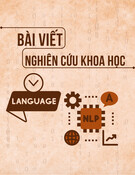
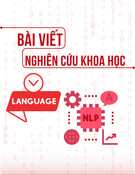
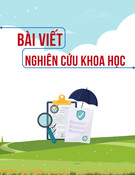
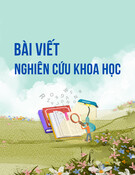
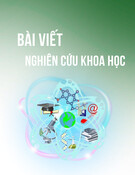
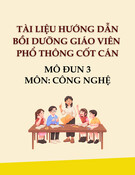
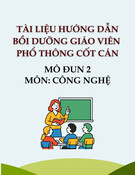
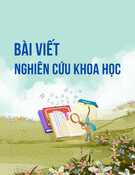
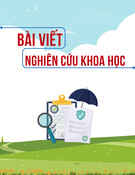

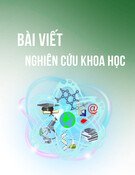
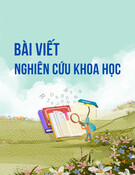
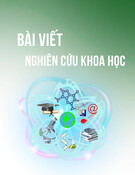
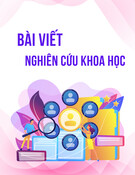
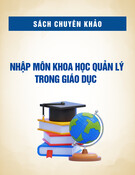
![Định hướng giáo dục STEM trong trường trung học: Tài liệu [chuẩn/mới nhất]](https://cdn.tailieu.vn/images/document/thumbnail/2025/20251124/dbui65015@gmail.com/135x160/25561764038505.jpg)
